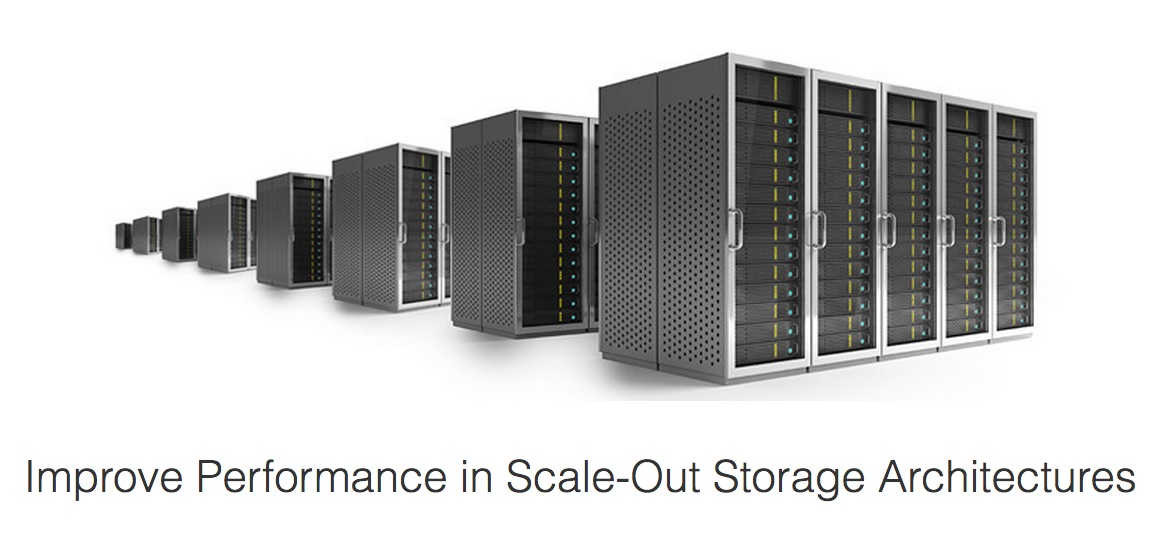What is so life-changing about The Seagate Kinetic Open Storage platform — a new class of Ethernet drives, plus developers’ tools and APIs? Why did Kinetic win the 2014 American Technology Award?
The world is really different today than from even a few years ago. The explosive growth of large-scale, data-driven applications is shifting the nature of enterprise storage infrastructure. A tradition of hardware-centric, file-based systems is moving aside for new software-defined, object-based approaches. We see an explosion of data that’s been created by mobile, social, video applications, the Internet of things, connected devices everywhere. The scale is unprecedented — that scale could be as much as six or seven zettabytes of data that needs to be stored in the cloud by the year 2020.
That amount of data is about 85 million years of high-definition video playback!
Storage architecture — mid-century modern
Today’s storage architectures were designed literally decades ago for a very different use case — not for a globally distributed large-scale cloud architecture and environment.
Seagate’s answer is the Kinetic Open Storage platform, a revolutionary platform that offers a new way to approach scale-out object storage with the world’s first Ethernet-connected drives and an open storage protocol that delivers architectural agility and improved system performance while reducing total cost of ownership (TCO).
The Kinetic platform eliminates the storage-server tier of traditional data center architectures by enabling applications to speak directly to the storage device. The platform simplifies data management, improves performance and scalability while lowering total cost of ownership of average cloud infrastructures by up to 50 percent.
How does Kinetic change everything?
Kinetic Open Storage Platform takes traditional hard drives and adds two key elements — the first is an object storage protocol, and the second is ethernet. The combination of those two things lets the entire storage architecture become much more efficient
In the past you’d have object storage applications that needed to translate down through filesystems to blocks and sectors and guess about where to layout data on the device. With Kinetic, now you have an object storage application that can simply put and get keys — it’s objects — to the device. And the device handles the space management, which is exactly what it knows best. The storage application still does everything it normally does, but now the device is a little bit smarter to enable a much more efficient stack.
The second thing Kinetic adds is ethernet. Ethernet lets you put these storage devices anywhere on your network. The combination of those two things lets the whole architecture be much more streamlined, where you have object storage applications speaking directly to devices over the existing fabric of the data center — ethernet.
What are the 3 ways Kinetic will change my IT life?
Kinetic’s benefits are: reduced total cost of ownership, performance and architectural agility.
Total Cost of Ownership (TCO)
The benefit to total cost of ownership comes from having storage applications now able to talk directly to storage of the object protocol, and over ethernet. That lets you pull storage servers out of racks — you fill that space up with additional devices and you end up with the most dense possible racks of storage at the best possible economics. That’s a result of pulling the capital cost of storage servers out of the rack, and decreasing the operating expense associated with those servers both in the form of power and human data center maintenance costs.
The benefit of that could be as much as 50% total cost of ownership at the data center level.
Performance
In addition Kinetic enables a much more high-performing architecture because you’ve removed those filesystems, and the data literally streams to the storage device as it’s written. The device lays it out optimally in the background. The performance benefit may in some cases be as much as four times at a traditional architecture.
Architectural agility
The third benefit is architectural agility. That comes from having changed the semantic abstraction to the device. What that does is let us innovate within the device much more rapidly, and it eliminates the very tight coupling of host systems and devices that’s existed in the past, which lets the whole thing scale much more flexibly and with a much faster pace of innovation.
So combined we have significant total-cost-of-ownership benefits, a higher-performing system and a much more flexible and agile architecture overall — those three things are the key benefits that will enable this architecture to deliver object storage at the scale we need, at a much lower economic profile.
To learn more about Kinetic Open Storage Platform, find white papers, technical documentation, and the full open source code from Seagate and some key open-source software partners, please go here.







